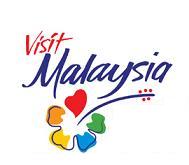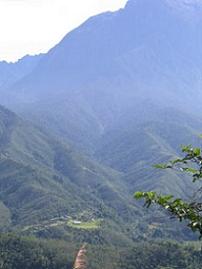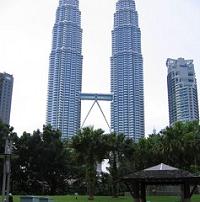Its TREMENDOUS. So press your ear up to the page and listen. That's the sound of a typical day at a Malaysian beach resort.
You don't often find this kind of quiet in Southeast Asia—where teak chaise longues outnumber temples, sunburned Europeans outnumber chaise longues, and masseuse has replaced fishmonger as the most common occupation of coastal villagers. From Kuta to Ko Phi Phi, every beach seems to be the setting for a full-moon party, a volleyball game, or a Filipino band playing "Guantanamera."
Not in Malaysia. Laid-back?This is a country whose most popular sports include kite flying and top-spinning. At Malaysia's comparatively few beach resorts, the pervasive calm is broken only by the crash of a wave. (Okay, the Filipino bands are here, too, but find me one place they're not.) Furthermore, few of your fellow Americans have even heard of these spots—they're off dodging Jet Skis in Thailand.
So far Malaysia's resort scene has been broadcasting at low frequency, but that's sure to change. Tanjong Jara, an early pioneer, reopened in 1999 after a thorough upgrade. The Andaman on Langkawi added a seductive spa wing last year. And the Pangkor Laut Resort is pushing the luxury envelope with its new, over-the-top Marina Bay Estates, not to mention a spa of its own, set to open next year. Each of these spots feels desirably remote but is easily accessible via Kuala Lumpur. Clearly, it was time to check things out.
the datai: the jungle at its coolest
And you thought you knew air. You don't—not until you've stood above the dewy, dripping jungle at the Datai, thrown your arms open, and inhaled, full-force, capping it off with a triumphant thump on the chest. This is air: spiked with jasmine, the humic tang of rain-forest soil, and a strong hint of the sea.
It's been eight years since the Datai turned the sleepy island of Langkawi into a bona fide luxury destination, albeit still a rather sleepy one. Located off Malaysia's northwest coast, Langkawi is a popular holiday spot for Asians, Australians, and Europeans, rivaling even Penang to the south. There are now more than 20 resorts here—but you'd never know it from your balcony at the Datai. Set between the Andaman Sea and the mountains, hidden in an absurdly lush forest, the resort could be the secret lair of a Bond villain.
If it is, he has great taste. The style is what you might call Aman-wannabe, and I don't mean that as a knock: balau wood floors so glossy you could dive into them; tile-roofed pavilions framed by frangipani and bougainvillea; altar-like beds swathed in impossibly white linens. A freshly plucked mango waits on your nightstand.
There are 68 guest rooms and suites in the main building, which emerges from the hillside like some ancient stone temple. Another 44 rooms are in villas scattered around the hillside (call for a golf cart when you tire of the steep climb to breakfast). Sheltered by thick forest, the villas offer more privacy, but for views, you're better off in the main building's corner and end suites, with their sweeping vistas of the jungle and glimpses of the sea beyond.
You could get your money's worth here just breathing in and out, but for some people that gets old. Downhill at the beach, a mile-long crescent on a secluded cove, you'll find just the right number of playthings: a few catamarans, a Windsurfer, nothing noisy. Borrow a kayak
and follow the otters across the bay, then play Spot the Hotel—it's almost invisible from the water.
Just off the beach, the Mandara Spa gives treatments in an open pavilion above a forest stream. There's something kinky about getting a peppermint footbath while being watched by a pack of lascivious monkeys in heat. I wasn't complaining. Nor was my girlfriend bothered when a turmeric body scrub left her stained Bart Simpson—yellow. Nothing a head-to-toe slathering of freezing cold yogurt wouldn't fix.
Food is the downfall of many a destination resort: What's more frustrating than being stuck in paradise with nothing to eat?The Datai is a rare exception. Simple dishes and snacks are done with flair—there's no better beachside lunch than the Datai's chicken tikka sandwich and piquant Greek salad. And while complexity doesn't often translate to the tropics, the chef has a sure hand with more creative dishes, such as a lobster salad served on a bed of leeks and capsicums with raisin seed—and—tomato vinaigrette.
No need for management to post a dress code: the Datai's clientele wouldn't dream of wearing Tevas to dinner. Guests tend to keep to themselves, so even when the resort is full—and it usually is—you feel like one of only a few dozen inhabitants. No waiting for beach chairs, no queues for the catamarans. Where is everyone? we wondered one afternoon, sipping apple-mint smoothies by a deserted pool.
Perhaps they'd taken a cue from the monkeys.
the andaman: casual and stylish?you got it
"The Datai sounds a little too quiet," you may be saying. "Where can a family or an active couple go for some old-fashioned, let-your-hair-down fun?"
The answer is a quarter-mile down the beach. The Andaman is bigger, brasher, and younger than the Datai both in years (it opened in 1996) and spirit (Hobie Cats, anyone?). Yet it's cut from the same stylish cloth, and its service, design, and location—plus the island's best restaurant—place the Andaman in a league above Langkawi's other resorts.
Unlike the Datai, whose jungle perch is a 10-minute walk from the beach, the Andaman sits just yards from the water, partially hidden behind a copse of keruing trees. All of the 181 guest rooms and seven suites are located in this four-story building; those at the eastern end, past the trees, have uninterrupted views of the bay. Standard rooms are on the small side, and pleasantly done up as 21st-century colonial bungalows, all earth tones and hardwoods, accented with Asian objets and a well-placed orchid. A bit hotel-ish, but very comfortable.
The Andaman is particularly good for children, who will love getting lost in the lagoon-style pool or roaming the grounds in search of "Monty the Monitor Lizard." Meanwhile, you're oblivious, sheathed in banana leaves and papaya oil at the brand-new hilltop spa—in a breezy pavilion with stunning views of the sea.
Skip the resort's other restaurants and dine at the Gulai House, just down the beach. You follow the distant pings of a gamelan along a torchlit path—off we go to Tribal Council—and emerge before a thatched-roof house on stilts. Silk cushions surround low wooden tables; a copper pitcher holds frangipani-infused water for hand-washing. The Malay-Indian dishes balance subtle flavors with spicy kick, from the sampler of mackerel, lentil, and beef curries to the tangy date chutney and juicy tandoori chicken.
After a dessert of star fruit, rambutan, and yellow watermelon with macadamia ice cream, we strolled back along the darkened beach. We were amazed to see neon-blue flecks of phosphorescence aglow in the tide, washing in to form constellations on the sand. Jeez . . . ever get the feeling you've stepped into a brochure?
tanjong jara: off the path but right on the beach
If Langkawi is a mid-tempo antidote to Bali and Phuket, it seems downright frenetic compared to Terengganu, the predominantly Muslim state on the peninsula's east coast. A conservative enclave whose revenue derives mainly from oil, Terengganu doesn't go out of its way to attract travelers. Then again, it hardly needs to: off its coast lie three of Southeast Asia's most pristine diving and snorkeling destinations—Great Redang, Perhentian, and Kapas. Renowned for years among savvy Asiaphiles, these islands have miraculously remained below the radar of mass tourism.
The same can be said for Tanjong Jara, Terengganu's foremost resort. Why this place isn't fully booked throughout the season is a mystery to anyone who's made the trek. Maybe the trek has something to do with it: there's not much else to draw you here unless you're a diver or a fan of kite-flying contests. But despite (or because of) the somnolent surroundings, I met guests who'd been ensconced at the resort for weeks and still hadn't finished soaking it up.
Kuala Terengganu, the tiny state capital, is 45 minutes by air from Kuala Lumpur. The coastal drive from the airport to the resort can take almost twice as long, depending on how much ginseng tea your driver's had. Schoolgirls in bright blue-and-white chadors trade gossip at roadside fruit stands, and that's about as lively as it gets here.
The original resort, opened in 1979, was far more modest than today's incarnation, with its wooden villas built in the style of 17th-century Malay palaces. An overhaul added such frills as air-conditioning and alfresco bathtubs, and a newly upmarket Tanjong Jara reopened in 1999.
The 10 villas and 44 two-story, two-unit cottages are strewn over a swath of grassy beachfront, none of the rooms more than 100 paces from the water. All face the sea, but you'll definitely want a villa for a front-row view—a wall of floor-to-ceiling windows open to the ocean breeze. Furnishings are smart and simple, closer to those of a beach cottage than an aggressively designed resort.
Terengganu's season runs roughly the reverse of Malaysia's west coast; here the monsoon shuts things down from November through March, which is the dry season everywhere else. During our visit in February, the water was off-limits because of six-foot swells. (In summer, the sea is as clear and sleek as glass, and the resort runs diving expeditions to nearby islands.) We took solace in the small but excellent spa, where massage oils are blended with herbs from the adjacent garden.
The more ambitious entrées at the resort's restaurant were disappointing, so we stuck to unfussy local dishes like nasi goreng (spicy fried rice with meat and vegetables). And there was that steady supply of obscenely fresh fruit—mangosteen, honeydew, papaya—that made cooked food seem almost barbaric by comparison.
pangkor laut: over-the-top luxury—and your own island, too
A sister property to Tanjong Jara, Pangkor Laut is the sole occupant of a 300-acre, jungle-shrouded island that is straight out of Cast Away. (Eighty percent of the island is protected forest.) The resort turns up on a lot of Top 10 lists, and last year it was a location for the Sports Illustrated swimsuit issue. Not to worry: that eight-foot python wrapped around Heidi Klum was imported.
So what's the big deal?Well, some of us are still trying to figure that out. Granted, there is something special about sharing an entire island with just a few hundred other guests. And only a curmudgeon wouldn't swoon at the sight of the villas rising on stilts from a moonlit bay. But if you're accustomed to staying in the sort of places where nature seems ridiculously well-behaved, Pangkor Laut comes off as pretty scruffy around the edges. Try not to notice the soda bottle floating in the harbor or the weeds poking out of the tennis court. Service can be lackadaisical (on the 20-minute boat ride from the airport, my bags were left uncovered at the prow and got thoroughly soaked). Aside from a dinner at Samudra, the excellent Malaysian restaurant, the food was mediocre. And what's with the lack of fresh fruit?Four types of juice available, all of them from a can?
Such kinks and gaffes are hard to ignore, but the future may be brighter: the management is busy reinventing the resort yet again. Construction has begun on a village-size spa complex that will open in 2002 as a resort unto itself, with 23 over-water villas and its own restaurants. And for the truly indulgent (any of you left?), there's the new Marina Bay, a collection of eight ultra-exclusive "estates" on the far side of the island, whose rates start at $8,000 for a minimum three-night stay. Yikes. What you get: Anywhere from two to four separate villas for up to eight people; a pool; living, kitchen, and dining pavilions; a few lily ponds; a butler; and a chef on call 24/7.
In contrast to the spartan and dim interiors at the main resort, Marina Bay has a tastefully opulent, pan-Asian look—enormous teak beds, Balinese sculptures, rattan armchairs. Worth it?Look out your villa window at any given moment to see an attendant plucking a fallen leaf off your front walk. Your dollars at work. Of course, for a price like that, you could just build your own pool at home, but you'd still be missing the private island.
the facts
Malaysia is predominantly Muslim; the less-developed east coast is more conservative than the west. The country's only recent incidents of violence against tourists occurred last spring in the Malaysian state of Sabah, more than 700 miles east of the Malay Peninsula, where the resorts mentioned here are located. For an up-to-date travel security report, check the State Department's Web site, www.travel.state.gov/travel_warnings.html, or call 202/647-5225.
Most overseas visitors to Malaysia fly into Kuala Lumpur, the hub for almost all domestic flights (each of the resorts is within an hour's flight of K.L.). You can reach Langkawi via a nonstop flight from Singapore as well.
Malaysia's west coast (Langkawi and Pangkor Laut) is most pleasant from November through May, while the east coast (Terengganu) is best from April through October. Monsoons strike the east coast between November and March—don't go then; severe storms frequently disrupt flights and ferry routes. Check with each resort at any given time, as weather can vary greatly even in the same general region. The good news: high temperatures hover around 85 degrees year-round throughout the country.




 The long coastline of Peninsular Malaysia with Straits of Malacca to the west and South China Sea to the east provides many choices of beaches and islands for visitors to choose their holiday destination. Some of the beautiful islands are
The long coastline of Peninsular Malaysia with Straits of Malacca to the west and South China Sea to the east provides many choices of beaches and islands for visitors to choose their holiday destination. Some of the beautiful islands are 




